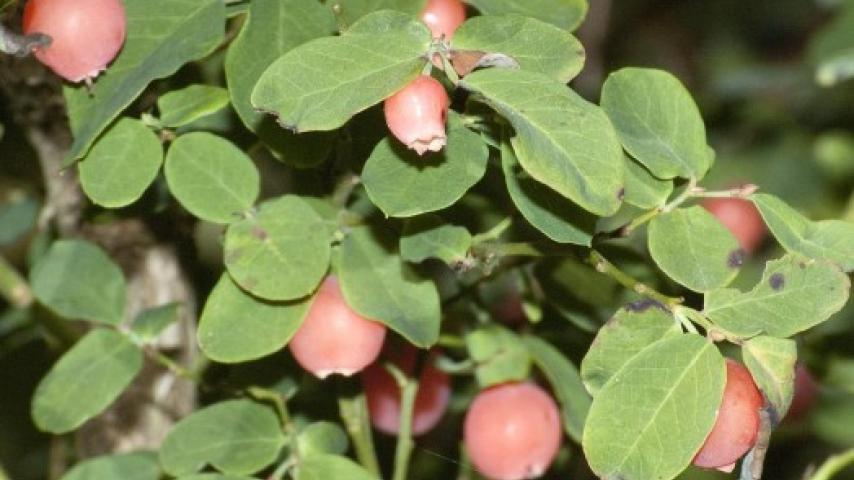Red Huckleberry (Vaccinium parvifolium)
This species is endemic to Pacific coast forests, where it is a common understory plant.

KINGDOM Plantae - PHYLUM Anthophyta - CLASS Eudicotyledonae - ORDER Ericales - FAMILY Ericaceae
It grows not only in the lowlands but also in montane forests up to 1500 m in elevation. Reaching 4 m in height, it is considered a moderate-sized shrub. It is among the most common woody plants growing on rotting “nurse” logs, as well as growing on a wide range of soils, from poor to well-endowed with nutrients.
The branches are characteristic, greenish in young plants and distinctly angled in growth. The leaves are up to 3 cm in length. Young leaves are dark green with serrate edges and persist for 3–4 years. Older leaves are lighter green, with entire edges, and are deciduous. The flowers are bell-shaped and greenish-yellow to pinkish. The small (mostly <1 cm) fruits are bright red and, although edible, somewhat sour to the taste.
As in other plants with edible fruits, the seeds are presumably mostly bird-dispersed. A great variety of birds are known to eat the fruits, including grouse, American Robins, Swainson’s Thrushes, Cedar Waxwings, Spotted Towhees, and Band-tailed Pigeons. Squirrels, chipmunks, and mice and a wide variety of carnivores including raccoons, foxes, and bears also take them whenever they are available. The branches are important winter browse for deer and elk.
Reproduction is both sexual (by dispersal of fertilized eggs in seeds) and vegetative, by sprouting from branches, stems, or rhizomes. Many huckleberries reproduce more effectively from vegetative than from sexual reproduction, all perhaps suffering from inbreeding depression and self-incompatibility during self-pollination.

